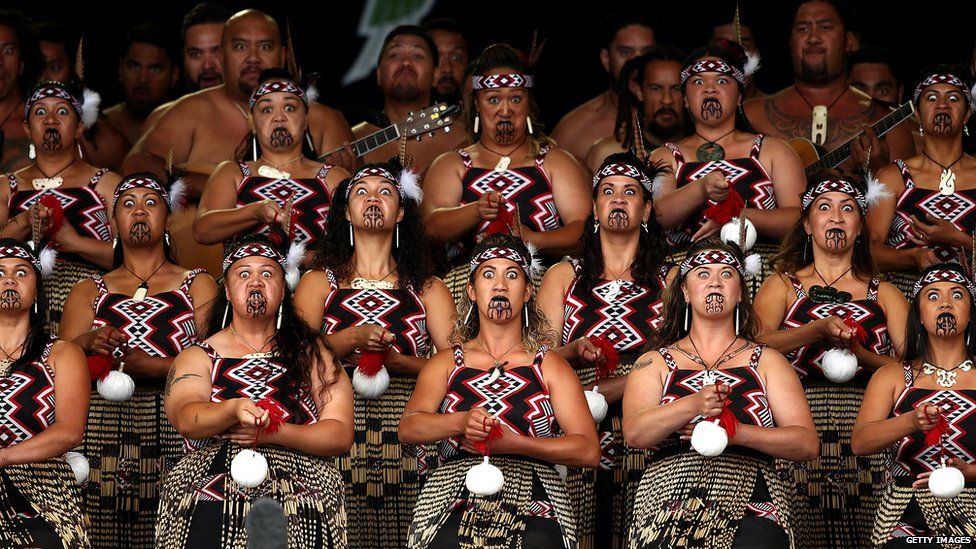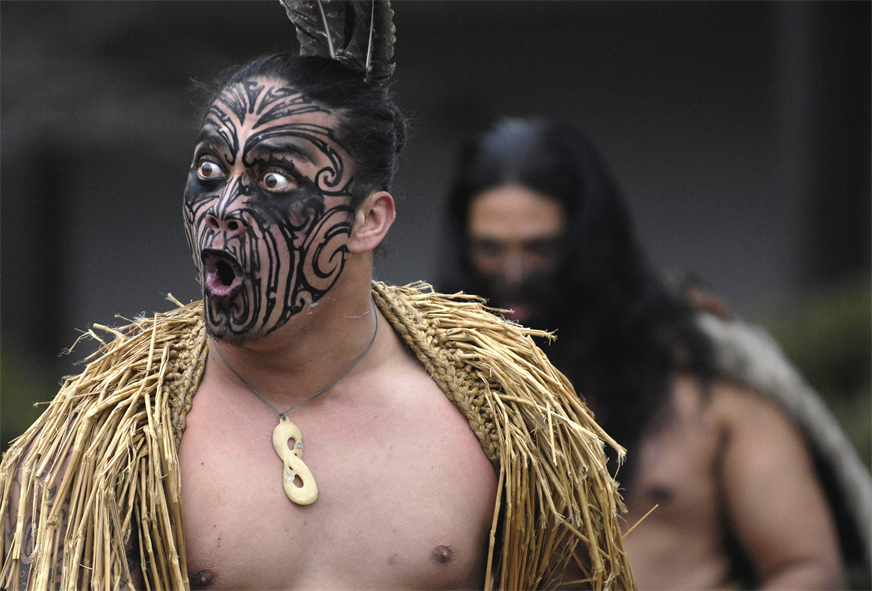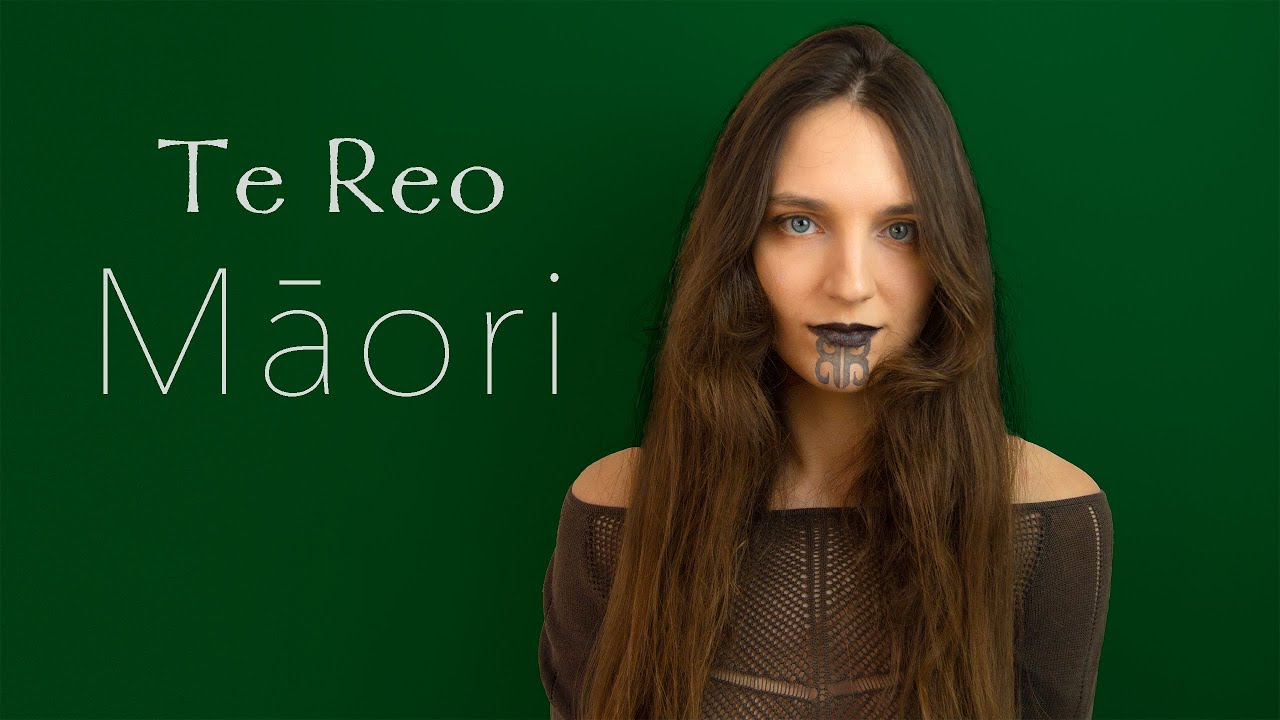Exploring The Newzealand Maori Culture In The 21st Century - Resilience And Revival
Newzealand Maori culture, the indigenous heritage of New Zealand, holds a deep-rooted significance in the country's identity. With a history that dates back to the 13th century, the Māori people have seen their traditions evolve through various challenges, including European colonization and the resulting loss of land and cultural suppression.
Jane RestureAug 07, 202338939 Shares548439 Views

Newzealand Maoriculture, the indigenous heritage of New Zealand, holds a deep-rooted significance in the country's identity. With a history that dates back to the 13th century, the Māori people have seen their traditions evolve through various challenges, including European colonization and the resulting loss of land and cultural suppression.
Despite these trials, Māori culture has not only endured but has experienced a revival in recent times, finding its place in the 21st century while holding on to its unique identity. Let's explore some quick facts about the Maori people then dive into the resilience and vibrancy of Māori culture in contemporary New Zealand.
Quick Facts About The Maori People
The Maori people, indigenous to New Zealand, have a captivating cultural heritage that has piqued the interest of many. Their history and traditions are filled with unique practices and customs that have been passed down through generations. Let's explore some of the intriguing aspects of the Maori culture:
Language - Te Reo And Its Dominance
The Maori language, known as "Te Reo," holds a central place in the identity of the Maori people. For centuries, it served as the primary means of communication and was the dominant language in New Zealand until the 1860s.
Haka Dance - The Powerful Expression
One of the most iconic aspects of Maori culture is the "Haka" dance. This ancient and powerful performance is often seen before battles, during ceremonies, or as part of cultural shows. The Haka is a mesmerizing display of strength, energy, and tradition, deeply ingrained in Maori customs.
Oral Tradition - Passing Down The Legacy
Prior to European contact, the Maori had no written language. Instead, their history, legends, and knowledge were meticulously preserved through oral tradition. This practice ensured that their cultural heritage remained alive and vibrant over the ages.
Tattooing - Ta Moko And Its Significance
Tattooing, known as "Ta Moko," holds profound cultural significance in Maori society. The intricate tattoos were not merely decorative but were used to depict a person's lineage, social status, and achievements, making them an essential part of Maori identity.

Hangi Food - A Unique Culinary Tradition
Maori cuisine boasts a distinctive culinary technique known as "Hangi." This traditional method involves slow-cooking food underground, utilizing the natural geothermal geysers found in New Zealand. The result is a mouthwatering feast with flavors unique to Maori culture.
Marae And Powhiri - Welcoming Visitors
The heart of Maori communities lies in the "Marae," a sacred meeting ground. To gain access to the Marae, visitors must participate in a traditional welcoming ceremony called "Powhiri." This ceremonial process involves a warrior's challenge, chanting, singing, and demonstrating peaceful intentions before being granted entry.
The Maori people's captivating customs and traditions continue to fascinate and inspire people from around the world, leading to a desire to learn more about this remarkable indigenous culture.
Embracing Traditions Of Newzealand Maori
Māori culture is deeply tied to their ancestors, the land they inhabit, and the rituals they uphold. To be Māori means recognizing the importance of whakapapa (genealogy) and acknowledging their place as tangata whenua, the people of the land. Their meetinghouses (wharenui) serve as centers of cultural gatherings and ceremonies, where Māori uphold their customs, language, and spirituality.
The Significance Of Whakapapa
Whakapapa is at the heart of Māori identity, tracing genealogical lines that connect the living to their ancestors. It provides a sense of belonging, purpose, and an understanding of one's place within the larger community. The knowledge passed down through generations helps Māori preserve their cultural heritage and fosters a strong connection to their ancestral lands.
Traditional Greetings And Customs
One of the distinctive aspects of Māori culture is their oratory, which plays a central role in formal gatherings. Action songs, known as waiata, are also an integral part of their customs, used to express emotions, tell stories, and preserve their history. When welcoming visitors, Māori perform the hongi, a traditional greeting where noses are pressed together, symbolizing the exchange of breath and life force.
The Hāngī Tradition
Another cultural practice that has stood the test of time is the preparation of food using hāngī, an ancient cooking method. Hāngī involves cooking food in an earth oven, using preheated stones buried underground. This culinary tradition brings together families and communities, fostering a sense of unity and shared experiences.
Preserving Land And Identity
The connection to the land has been a cornerstone of Māori identity and a focal point of their struggles throughout history. The injustices of European land dealings in the 19th century led to the loss of significant ancestral land. While the government made some attempts to protect Māori land through special courts, later legislation made it easier for Māori to sell their land.
Land Settlements And Redress
The Māori people have been resolute in their belief that land is held in trust for future generations. In the late 20th and early 21st centuries, Māori groups embarked on land settlements with the New Zealand government, seeking recognition and redress for past injustices. These settlements, such as the Ngāi Tahu tribe settlement in 1997 and the land exchange in 2008, have been significant steps towards preserving Māori land and cultural heritage.
The Role Of Whenua In Māori Identity
Whenua, meaning land, holds great spiritual and cultural significance for the Māori people. It is believed that they have a responsibility to protect and nurture the land, and in return, the land provides for their physical and spiritual needs. This profound connection to the whenua continues to shape Māori identity and their relationship with the environment.

He Whenua Rangatira. A Māori land
Political Representation And Advocacy
From the mid-19th century, Māori leaders have been actively involved in New Zealand's governance. The presence of Māori members in Parliament dates back to that time, and today, there are seven reserved seats for Māori representatives. This political representation is an essential aspect of Māori culture and plays a crucial role in advocating for the rights and well-being of their people.
The Treaty Of Waitangi
The Treaty of Waitangi, signed in 1840 between Māori chiefs and the British Crown, is a foundational document that establishes the relationship between the Māori people and the government. It is seen as a partnership agreement that guarantees Māori authority over their lands and resources while granting them the rights and privileges of British subjects. The treaty remains a significant reference point in contemporary discussions about Māori rights and representation.
Challenges And Progress
While political representation has provided a platform for Māori voices to be heard, challenges persist. Māori are not a homogeneous group, and diverse perspectives exist within their community. Striking a balance between traditional customs and modern governance can sometimes lead to internal debates. However, Māori representation remains essential for promoting policies that address their unique needs and aspirations.
Revival Of Language And Culture
The Māori language, te reo Māori, faced near extinction as colonization brought English dominance. However, in the 20th century, there was a significant revival effort to preserve and promote te reo Māori. In 1987, Māori became an official language of New Zealand, recognizing its cultural importance.
Language Revitalization Efforts
Efforts to revitalize te reo Māori continue today, with Māori immersion schools (kura kaupapa Māori) and language nests (kōhanga reo) contributing to its preservation and transmission to younger generations. The resurgence of the Māori language has been crucial in rekindling a sense of cultural pride and identity among the Māori people.

About the Maori language
Cultural Expression Through Art
Māori art forms, such as carving (whakairo) and weaving (raranga), have seen a resurgence, with artists creating contemporary pieces that draw on traditional techniques and designs. These art forms not only contribute to cultural revival but also serve as a means of storytelling, preserving historical narratives and spiritual beliefs.
21st Century Challenges And Opportunities
While Māori culture experiences a revival, the challenges of the 21st century are not to be ignored. Socio-economic disparities persist, affecting Māori communities more significantly than other ethnic groups in New Zealand. Health disparities, educational achievement gaps, and housing inequalities are some of the pressing issues that need to be addressed to ensure the well-being and prosperity of the Māori people.
Addressing Socio-Economic Disparities
Overcoming these challenges requires collaborative efforts from the government, communities, and other stakeholders. Targeted policies that empower Māori to participate fully in the economy, access quality education, and attain better healthcare are essential to reducing disparities.
Cultural Tourism And Indigenous Knowledge
However, there are also many opportunities for Māori culture to flourish in the modern world. Cultural tourism and the increasing interest in indigenous knowledge and practices present avenues for Māori communities to share their unique heritage with the world. By participating in tourism ventures, Māori can promote cultural understanding and economic development within their communities.
Education And Cultural Exchange
The integration of Māori language and culture into mainstream education and media fosters cultural understanding and appreciation among all New Zealanders. Educational institutions have a vital role to play in promoting cultural exchange and creating an environment that values and respects Māori knowledge and traditions.
Embracing Māori Culture
As New Zealand embraces its multicultural identity, it is essential for all citizens, including immigrants and visitors, to understand and respect the significance of Māori culture. Schools, institutions, and businesses play a crucial role in promoting cultural awareness and understanding.
Fostering Inclusivity
In recent years, there has been a growing trend towards incorporating Māori cultural practices and celebrations into mainstream society. Waitangi Day, the commemoration of the Treaty of Waitangi, is now a public holiday celebrated by all New Zealanders.

Waitangi Day | 6 February 2023 | RNZ
Matariki, the Māori new year, is also gaining recognition as a time of reflection and renewal. This inclusivity enriches the national identity and strengthens the bonds between different cultural groups.
People Also Ask
What Language Do Māori Speak?
The Māori people speak the Maori language, also known as Te Reo Māori, which is primarily spoken in the North Island of New Zealand.
What Are Māori Famous For?
Māori are well-known for their distinctive traditional full-body and facial tattooing, known as "Ta Moko." They also hold a unique status as indigenous people with full legal rights in New Zealand.
Did Māori Originate From Asia?
Māori are Polynesians whose ancestors lived in the Taiwan region. Although there were early speculations about other origins, it is now agreed that they are not from Asia but rather from the Polynesian region.
Are Māori People Chinese?
DNA analysis suggests that Māori ancestors migrated from mainland China to Taiwan, then to the Pacific Islands, and eventually settled in Aotearoa (New Zealand).
What Do Māori Believe?
Many Māori today are Christians, primarily belonging to the Anglican, Presbyterian, or Roman Catholic denominations. Traditionally, Māori religion was based on the concepts of mana and tapu.
Are Māori People Friendly?
Yes, Māori people are known for being friendly and welcoming.
Are Māori Kiwis?
Yes, Māori people are commonly referred to as Kiwis, which represents both the people and the country of New Zealand.
What Foods Do Māori People Eat?
Some traditional foods of Māori people include Kānga kōpiro (fermented corn porridge), Parāoa rēwena (sourdough potato bread), Hāngī (a method of cooking food in an earth oven), Toroi (fresh mussels with pūhā juice), Māori boil-up, Huhu grubs, Paua fritters, and Īnaga (Whitebait).
Conclusion
The Newzealand Maori culture remains a vital and dynamic force in the 21st century, enriched by a sense of heritage and a determination to thrive in a modern world. With their language, art, and customs, the Māori people continue to inspire and contribute to the fabric of New Zealand's identity.
Preserving and promoting Māori culture is not just the responsibility of the Māori community but a shared obligation for all New Zealanders. By understanding and embracing the richness of Māori heritage, the nation can move forward as a united and culturally diverse society, celebrating the treasures of the past while embracing the possibilities of the future. Through continued support and collaboration, Māori culture will undoubtedly continue to flourish for generations to come.
Latest Articles
Popular Articles